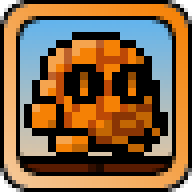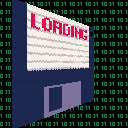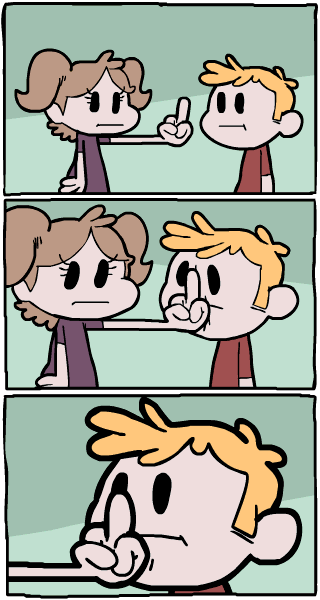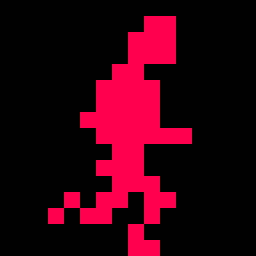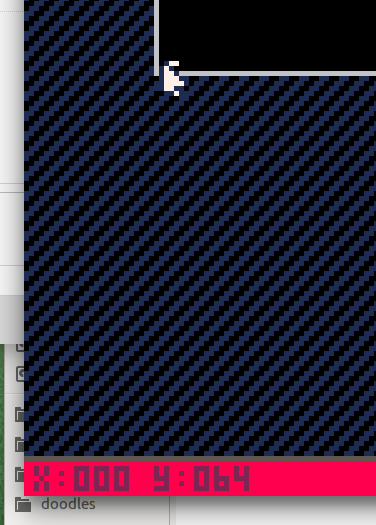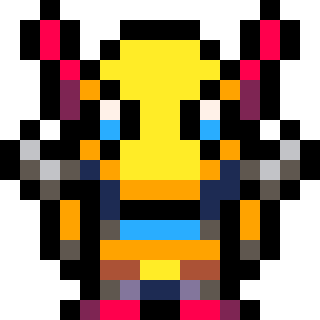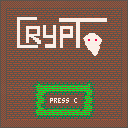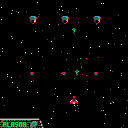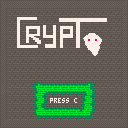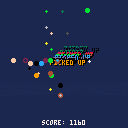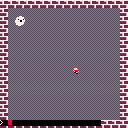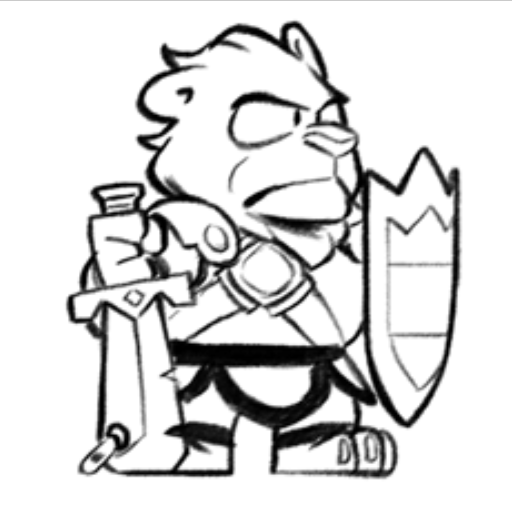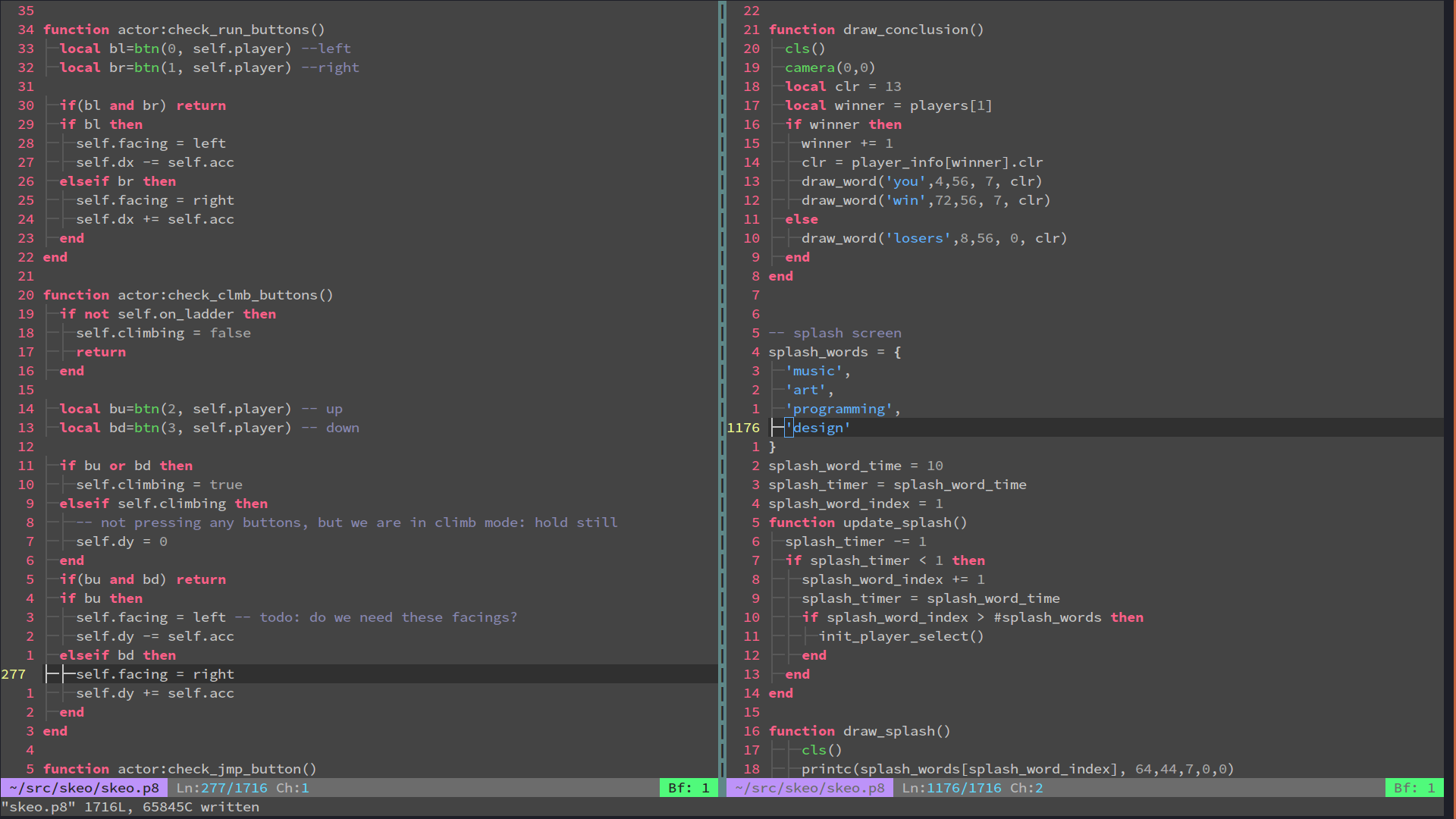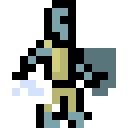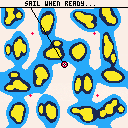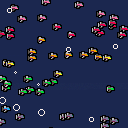I was working on a Chinese to English vocab program, and pinyin (The English alphabet for Chinese) uses diacritics all the time
maybe not a thing that can be used in the code, but in text variables. Having a function in the text variable like "dia" (like flr) or something. If you're having issues imaging what the would look like, here
Print("Hello W' .. dia("o") .. "rld")
|
Hello Wòrld |

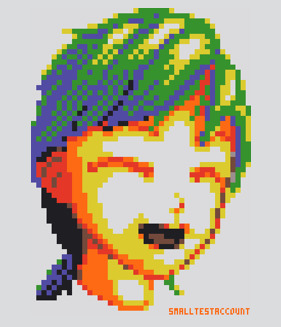
Hey, zep. I really love pico-8. It is an amazing console. It costs its money. But I'm really disappointed, that we can't help you with making it better. I'm not talking about making it open source (tho it would be amazing), but maybe, just maybe, you could peek a few guys, who could help you in the future development. I would be really happy to help you my self. Again, that doesn't mean going open source for everyone.
It's all up to you, but it will make the pico-8 much much better, and it will be updated more often.
Please, tell me what you think about that.




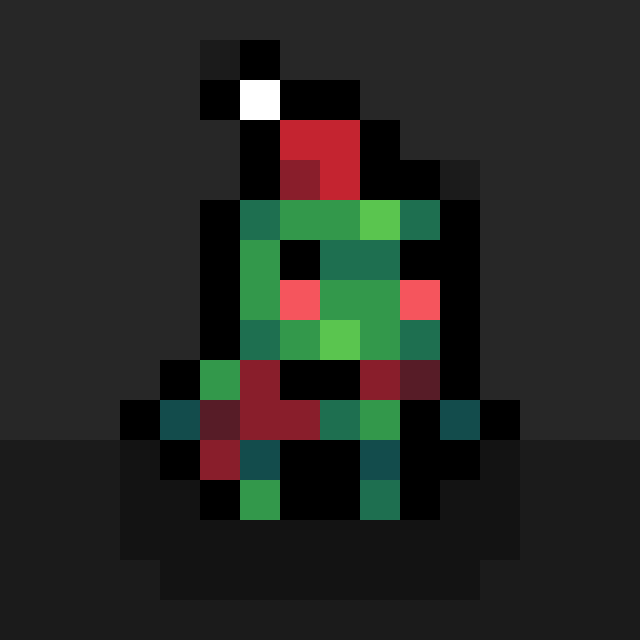


“Picroisières” is a procedural sailing simulator. Every time you play the game, a new unique archipelago and new weather conditions (wind direction and speed) will be created. Although the map will always look roughly similar, the shape and location of islands should be sufficiently different to keep route planning interesting.
There are two screens: Map and Compass. Toggle between the two by hitting the “Z” key (FR: “W”, DE: “Y”).
Controls are very simple: you only control steering and “power”. Think of the latter as an abstraction for all the trimming, sail changes etc.
Steering is done using the left (port) and right (starboard) arrow keys. “Power” is increased or decreased (by 5% increments) by pressing the up and down arrow keys respectively.
Your boat is a racer: it can easily reach over 15 knots in strong wind! However, sailing at higher speed risks damaging your ship. At 20 knots, a critical failure will statistically occur after approximately 4 hours (game time). At 25 knots (hard to reach but not impossible), after only 45 minutes. Note that this is a probabilistic event, so if you’re unlucky, you could suffer a breakdown much quicker (and vice versa). To be safe, reduce “power” to stay well under 20 knots, where the chance of damage is very low…
The game consists in completing a course through 4 waypoints or gates, in the prescribed order, then coming back to your starting point. Each gate (NW, NE, SE, SW) is marked by a red “+” sign on the map. The next waypoint you must reach emits a “pulsating” signal. The gates are not buoys: you don’t go around them, you must sail “through” them. When you clear a gate, the symbol turns green and the next waypoint is automatically selected. After you clear the last (SW) waypoint, you must return to the starting box.
In “Picroisières”, you race against the clock. The timer starts when you exit the starting box and stops when you re-enter it (after completing the course). Leaving the starting box again restarts the clock, so you can compete against yourself (try to improve your time) or challenge a friend (hot seat).
As in real life, weather (windspeed and direction) changes continuously (and randomly) over time. Before you first exit the starting box, you can randomise the weather as many times as you want by hitting the “X” key (as if choosing the day on which to go sailing). Once the “race” has started, this option becomes unavailable.
White and light blue indicate a safe depth, if you ever enter dark blue or yellow, you will beach your boat (this effectively ends the game as you can no longer manoeuvre in any way). A black symbol at the centre of the screen marks your current position. A black vector (to the edge of the screen) plots your course following the current heading.
If you suffer a breakdown (as a result of sailing at excessive speed), your “power” drops to a maximum of 20% (jury rig) and the drag coefficient of your boat is multiplied by two. Needless to say this makes you rather slow! You must limp back to the starting box (automatically selected in case of damage). When you leave the starting box again, you boat will be repaired.
The map has periodic boundary conditions, which means you can pretty much sail indefinitely in any direction (the archipelago just “repeats” itself). Of course, the gates remain where they are, i.e. you cannot reach the SW gate by sailing NE!
The Compass also shows your heading (CRS), speed (SPD) and the apparent windspeed (WND), as well as the current “power” level. The light blue arrow is the apparent wind direction (taking into account boat speed), the dark blue one is the true wind direction (both obviously overlap when motionless).
Enjoy!


Another PICO-8 doodle for Octobit 2017. It is very much based on my previous butterfly doodle at https://www.lexaloffle.com/bbs/?pid=45347#p45346
The fish are inspired by neon tetra fish.
I confess, I'm never going to finish this. I've tinkered with it for over a year and it's just slow going. The AI is meh, there are collision issues and velocity issues, blah blah blah. But I at least wanted to show you guys the concept.
One button jumps, one button attacks. Up and down do stances. There's combos in these button pushes. There's a divekick. You get it.
I wasn't trying to break new ground, I just wanted something that felt like the nintendo platformers I remember, like Trojan and Rygar and Ninja Gaiden.
If you want to improve on it, you go right ahead. If you want more sprites, I'd be happy to oblige. Enjoy.








 2 comments
2 comments
